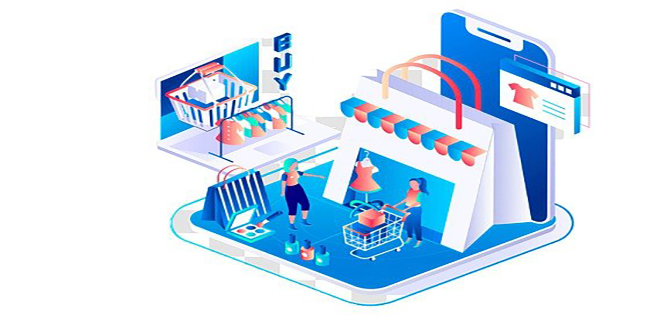
In-store advertising should get so much easier for retail media now that the In-Store Marketplace (ISM) has launched.
The first solution of its kind, ISM, is a one-stop shop for retailers where they can manage their in-store presence. Before this, stores had to negotiate digital signage, audio advertising, and in-store displays. However, with ISM, in-store media publishers can more effectively manage campaigns and simplify access to audio and display inventory.
What better way to engage consumers than while they are out on their feet spending money? Engaging them with relevant advertising — right in their faces — will encourage them to dish out more dollars. Everything is about skinning the cat most efficiently.
The ISM platform was developed to do just that. It provides a centralized ecosystem that brings efficiency to campaign management for in-store pubs through the ISM Ad-Server and ISM portal and offers oversight of retail media pricing, yield management, and buying activity reports.
Retailers working parallel to in-store pubs can integrate ISM directly into their retail media platforms. Providers like CitrusAd can expand their unified offering to include in-store without integrating the contrasting in-store media systems.
Trusted media service providers in the marketplace include Vibenomics, Mood Media, Sellr Technologies, FuelMedia TV, WaterStation Technology, and others.
“The goal here is to provide in-store as an incremental revenue component to the retailer,” says Paul Brenner, Chief Strategy Officer, Audio Out-Of-Home, Vibenomics. “We want retail media to grow, and advertisers want to utilize digital in-store specifically. This benefits in-store publishers by bringing their digital media to life. Retail media should spend their ad dollars in the space where consumers are shopping and stop fighting for ad dollars outside of that space. In-store retailers will see revenue increases if they combine this common solution.”
It’s Time to Tap Into In-store Media
Retail media may have started as a digital commerce-only platform used by retailers to advertise and promote products online, but it is much bigger now.
“2022 is the year of retail media,” according to eMarketer. U.S. retail media spend increased by over $41B and now accounts for 17.2% of the total U.S. digital spend. It’s booming and will continue to do so.
The nature of retail media has evolved to include DOOH, as well as in-store video displays and audio advertising. For example, as part of ISM, Mood Media provides advertisers with access to audio and display inventory across 330,000 of their affiliates and retailers through a single integration point.
“The In-Store Marketplace comes at a critical time for the retail media industry. Technology has changed how people use brick-and-mortar stores – even today, shopping looks drastically different than it did three years ago. As new programmatic technology, such as digital in-store audio and displays, becomes increasingly common, brands need a simple way to manage, activate and measure their in-store ad presence. This is where Mood Media saw an opportunity to collaborate with Vibenomics and contribute to the development of the In-Store Marketplace,” says Craig Hubbell, Chief Revenue Officer, Mood Media.
“Collaboration always breeds innovation. We are elevating the customer experience by being a part of cutting-edge offerings that simplify processes and enhance customization. From audio to display, the In-Store Marketplace creates a centralized hub that adds incremental value to our retail customers by integrating retail media tools into one another, making in-store ad management more accessible and effective.”
The Future of Retail Media
Over the next 12-36 months, we will see the simplification of ad tech powering in-store media and its inclusion in retail media providing buyers with extensive access to inventory.
“The In-Store Marketplace allows buyers to bundle display inventory and digital audio into a single PMP or cherry-pick your options — whatever approach fits your current needs,” saysChelsea Monaco, VP, eRetail & Commerce Media, Merkle. “Consolidating the big shopper media partners like Vibenomics, Mood Media, Sellr Technologies, FuelMedia TV, and WaterStation Technology facilitates more frictionless engagement with partners and ubiquitous access to the inventory. These benefits were a major takeaway from our research last year, and I imagine they’ll surface again when we repeat our study this year.”
It’s evident there are money bags to grab in retail media, and Vibenomics execs believe that in five years we will see if retail media can retain its actual value. With retail media expected to grow to $70 billion over the next five years, the channel will need to improve measurement and its ability to prove results by continuing to offer innovative ideas, like ISM.
From the outside looking in, it seems that ISM will have a large hill to climb to build a viable network as we’re not yet seeing a huge selection of premium media providers currently signed up for the offering. Still, it fills a niche in a very complicated and diversified landscape of media owners where the buying process needs to be simplified for buyers. It feels like this is a step in that direction, but like everything else in ad tech, it will take time to get it right.